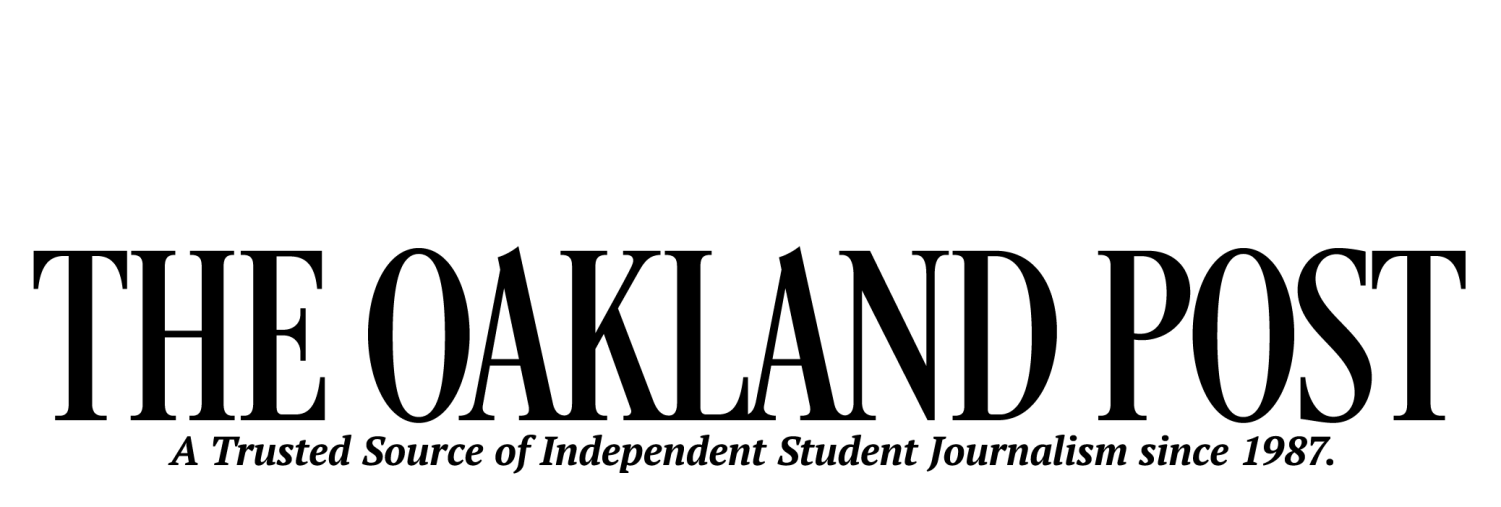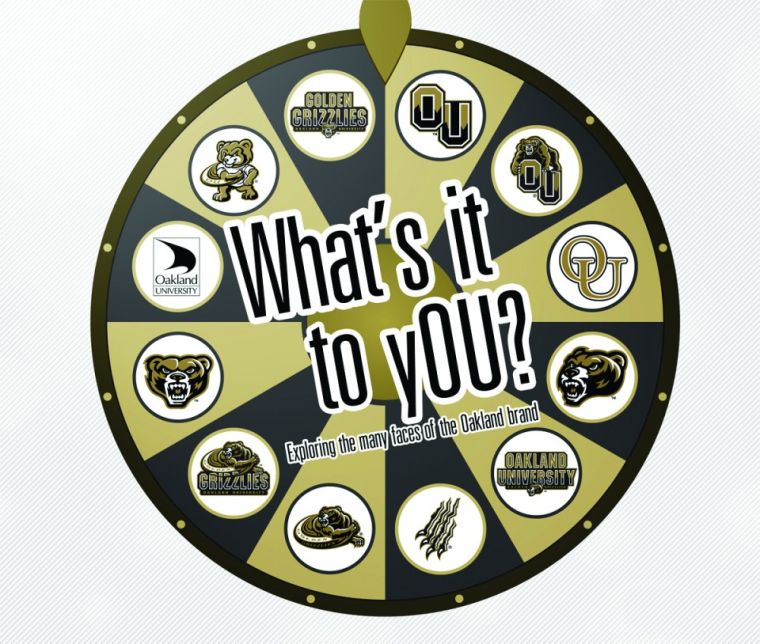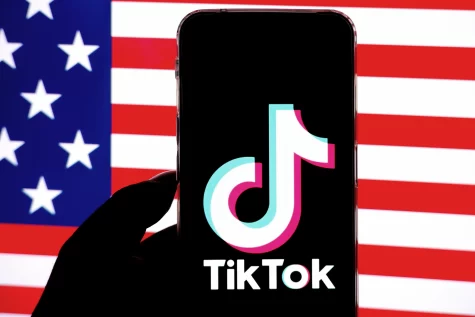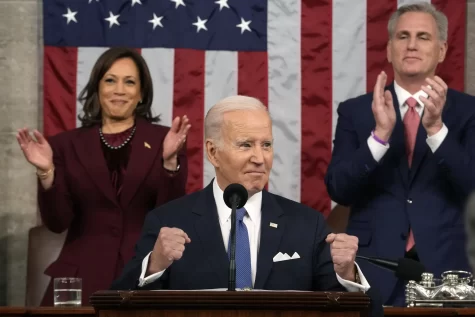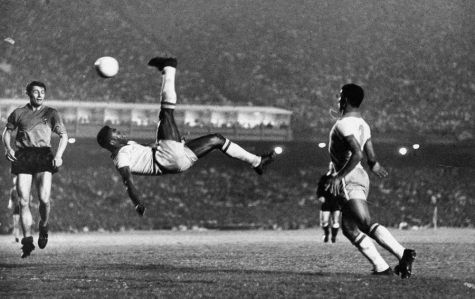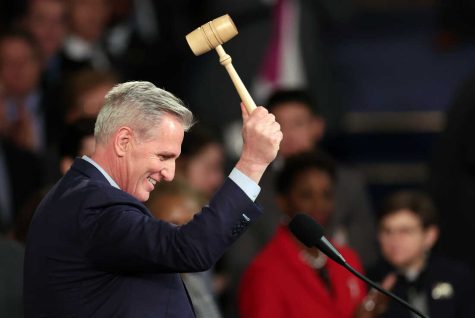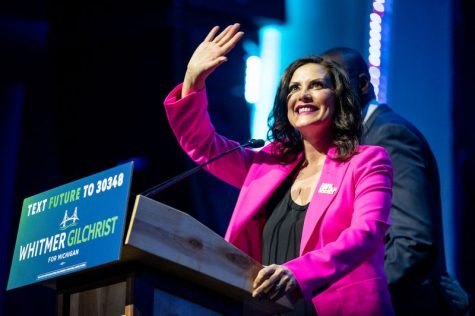Identity: What is Oakland’s?
Oakland University is lost and needs your help. The school is trying to find a clear path, seeking to define its identity and trying to create a unified image.
At his University Update and an abbreviated speech given at an Oakland University Student Congress meeting last month, President Gary Russi challenged members of the campus community to help form the OU brand.
“Branding can happen one of two ways,” Russi said. “It can happen to us or we can take control of it.”
A brand can encompass a myriad of things about an institution — including personality, physical campus, quality of education and public perception — and can be more than a symbol. It’s more of an overall image and Russi hopes to carve one out with input from the local community and students, faculty and staff.
In 1959, OU welcomed its first official class. Compared to schools with established identities like the University of Michigan, which opened in 1817, and Michigan State University, established in 1855, Oakland is a young institution.
“We are young enough and we still have this opportunity,” Russi said. “We are in a (great) position to make this happen, this brand.”
He explained that schools like U-M could not re-brand because “everyone knows what it is” and that “it’s going to be that way.”
A13th straight year of enrollment growth and over a decade of Division I athletics can attest to OU’s growth in name recognition, but it is time to pinpoint the precise direction of the youthful school’s brand.
According to Russi, “we will need your help to make that happen.”
“When you say East Lansing or Ann Arbor, you think of the schools and it’s not quite the same feeling,” OU alumnus and Rochester Hills Mayor Bryan Barnett said. “I think that’s why it gets a little more challenging. Oakland has a greater hill to climb than some of the other schools.”
While it will be difficult to change the opinion, awareness and exposure of the university have been increased in recent years.
“OU does a really good job at putting themselves out there — the ads on television and the little ads on YouTube are a great reminder of what’s out there,” said Deanna English, a senior at Oxford High School and prospective Oakland student. “I feel like they’re really trying.”
Imaging and marketing
“We have a constant conversation going with the president because we don’t really have a brand right now,” said Ted Montgomery, OU’s media relations director. “Your brand drives all your marketing. U-M has the block M, but they also have a 200-year jumpstart.”
The future of a physical brand or identifiable logo, an integral part of campus identity, is still up in the air.
“It’ll be an interesting change internally and I don’t know of any timeline,” said Michelle Moser, OU’s director of integrated marketing.
A logo people may recognize is the image of a grizzly bear climbing on OU’s letters. That is more synonymous with the branding of the athletics department.
The success of the basketball programs has propelled Oakland onto the national stage, making the identity of the school more crucial than ever.
“Even seeing Oakland scrolling across the bottom of a sports program gives it some validity it didn’t have before,” Barnett said.
Oakland teams were known as the Pioneers before 1998. The change to the Golden Grizzlies came along with a switch to Division I competition.
OU’s first mascot was Pioneer Pete, but a panel of about 20 members that included various administrators, men’s basketball coach Greg Kampe and students like Barnett was assembled in 1998 to help decide on a new mascot.
Barnett said the process involved answering personality-type questions and the group — with the help of a marketing firm — chose the grizzly because it “was marketable for selling cuddly bears for kids and would also look aggressive on a T-shirt.”
The move has arguably been one of the biggest shifts in OU’s short history and elicited some concern.
“Does it say ‘Pioneers?’ We wanted to pioneer new designs and pioneering the future,” Barnett said. “There were a lot of concerns about it and a lot of people just didn’t know.”
As the student body president during a time of transition for athletic imaging, he said OU has improved greatly over the “Pioneer” days in terms of marketing.
Currently, there are nine different official OU logos depicting the Golden Grizzly. Each is used for different purposes, but makes it difficult to create unified merchandise.
Moser, like Russi, believes there should be a singular brand. She thinks there may be the same kind of resistance against that move, similar to what happened with the phasing out of Pioneer Pete.
“These things take a long time to develop, launch and engrain in the public consciousness,” Moser said.
According to Montgomery, the Oakland Sail logo pictured in a rectangle has been in use for 25-30 years. It is displayed on the official OU website, university documents and signage.
The original logo, a sail within a circle, is still used on Board of Trustees documents and official transcripts. The changing of the sail image has been the only major change as far as official non-athletic branding.
Developed by John Galloway and Howard Clarke in 1962, the emblem, colors and motto were a part of some 100 preliminary sketches submitted to the Emblem Committee.
The school’s colors have stayed the same throughout all these changes. The color gold was chosen since it has “long commanded admiration as a heraldic religious color,” black, because it, combined with white, “denotes purity and hope” and white for the idea of virtue.
“White is the most widely used of stationer’s or publisher’s papers; black is the tone which printing presses are commonly set up to handle; and gold is thus the only special one of the three colors, commercially speaking,” Galloway wrote.
The sail emblem was chosen by Galloway, who created it to be symbolic of pursuit.
“That sails will be used by men, especially those of the heroic mould of Homer’s Odysseus, long after people will have become bored by our settling of new planets in outer space; secondly, the seal or crest which ever satisfied the wishes of all persons in a nation or a family has yet to be created,” Galloway wrote.
Changing the icon
OU’s social media presence includes heavy usage of Twitter, Facebook and YouTube.
Rachel Reardon, a senior majoring in French with a minor in advertising, recently created the university’s social media image through an icon that is used on its social media platforms.
“Branding is much more than a logotype,” she said. “It encompasses everything from graphics and color schemes to slogans, the social voice and everything in between. It’s the whole package, the entire identity of the university in this case.”
Another part of the marketing campaign is the “peeking” grizzly bear used on billboards and on undergraduate admissions materials.
Ideas for the icon were crowdsourced because Moser didn’t think the athletics-based climbing grizzly bear was evocative of her department, and also did not want to use the traditional interlocking letters.
There are two different typographical logos depicting OU’s letters. One has two-toned block letters that touch, while the more official logo has interlocking characters that resemble the official logo of Oklahoma University.
“It’s a temporary thing with our page until we get the official brand,” Moser said. “We were just kind of sick of looking at the bear.”
The Twitter feed became a fixture of the OU Marketing and Communications department in early 2009, while the Facebook fan page was commandeered from a student who had started it unofficially.
“We tracked him down and took over from there,” said Moser of Brian Gingrich, the page’s creator. “He had built a nice fan base for us and established the clout.”
Moser said the marketing department began this project without official approval from university administration, but was surprised by the reaction to their efforts to create a conversation with students.
“I was taken aback by the communities we were able to bring together,” Moser said of the initiative. “Because of the tone, we can talk a certain way that we couldn’t get away with in print.”
While the addition of a different icon image may seemingly separate Oakland’s social media from print or web marketing, Moser said the three go hand-in-hand and will experience any imaging changes together.
***
This article is the first of a two-part series. Next week’s issue will further explore the branding of OU.
